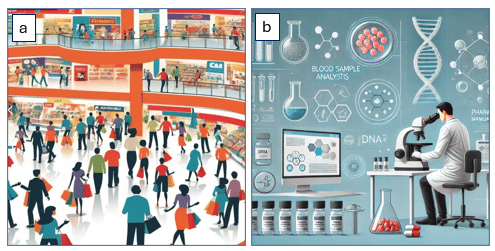Biobank Consent Forms
When obtaining informed consent it is important to tell patients about the potential commercial use of their biological samples to build trust. For this reason, biobank consent forms frequently use the term “commercial use.”
Equally essential is emphasizing how commercial use is crucial for turning scientific discoveries into treatments that help future patients. Many people associate “commercial use” with profit-driven activities like advertising or product sales. However, in a biobank consent form, its role is more complex and essential for medical progress.
Meaning In Everyday Language
In everyday terms, people see commercial use as business-focused activities that generate financial gain. For instance, companies use images for marketing, license logos, or sell music for profit. These uses mostly benefit companies financially, which can make patients uneasy. Therefore, when asked to give informed consent to the commercial use of their biological samples—something deeply personal—they may feel uncomfortable.
Meaning In Biobank Consent
However, in a biobank, commercial use has a broader purpose. It drives the development of new drugs, diagnostics, and vaccines. Biobanks collect and store samples like blood, tissue, and DNA, along with related data, for research. When patients give informed consent to commercial use, they allow researchers and private companies to work together. As a result, this collaboration helps move discoveries from labs to patients.
Commercial Use For Medical Progress
Pharmaceutical and biotech companies have the resources and expertise to create new treatments. Moreover, they lead the process of transforming biomedical discoveries into therapies. This process includes:
- Drug discovery: Identifying compounds that could treat diseases using genetic or biomedical insights derived from biobank data.
- Clinical trials: Testing the safety and effectiveness of potential treatments using patients’ biological samples to ensure they work for different populations.
- Production and distribution: Developing the capacity to manufacture these treatments on a large scale and making them accessible to the public.
Without commercial partners, research often stalls. Academic researchers may not have enough funding or resources to fully develop new treatments. Therefore, commercial partnerships bridge this gap and ensure that research progresses from idea to treatment.
Transparency In Biobank Consent Builds Trust
Patients don’t always link “commercial use” to life-saving treatments. Thus, clear communication in biobank consent forms is crucial. Some patients worry about companies profiting from their samples without receiving compensation. However, transparency is key. Consent forms should explain how commercial use helps develop treatments that benefit public health. Furthermore, patients need to understand that while companies may profit, this process is necessary to create new vaccines, drugs, and diagnostics—medical interventions that could one day save lives.
By clearly stating that patients won’t receive financial compensation, biobanks can prevent misunderstandings. Instead, the focus should be on the societal value that commercial use brings. It accelerates breakthroughs that improve or save lives.

Nuanced meanings of “commercial use”, (a) in popular imagination, and (b) in biobank consent forms.
Highlighting the Positive Impact of Commercial Use
It is essential to shift the narrative around commercial use from one of mere profit to one of vital collaboration between research and industry. Biobanks play an indispensable role in the early stages of medical research, but pharmaceutical companies, biotech firms, and other commercial entities are responsible for turning these discoveries into actionable treatments. This collaborative process has already resulted in breakthroughs such as:
- Cancer Immunotherapies: Many innovative cancer treatments, such as CAR-T cell therapy, began as academic research using patient samples but were brought to market through commercial collaborations. These treatments wouldn’t be available to patients without commercial development and investment.
- mRNA Vaccines: The rapid development of COVID-19 vaccines, especially mRNA-based ones like Pfizer-BioNTech, was driven by commercial collaboration. The use of patient data and samples from previous research on other viruses helped accelerate the development process.
- Personalized medicine: New therapies tailored to individuals’ genetic make-up, often developed through commercial efforts using biobank data.
By focusing on these real-world examples, patients can better appreciate how commercial use directly leads to medical innovations that may one day benefit them or future generations.
Conclusion
We must inform patients about commercial use to build trust and ensure transparency. However, it’s equally important to show how this term connects to medical progress. Commercial use isn’t just about profit. Rather, it creates the conditions necessary for developing and distributing new treatments, vaccines, and diagnostics. Without the private sector, many discoveries wouldn’t reach patients. Therefore, when patients give informed consent to commercial use, they help enable the next generation of treatments and cures that could transform healthcare.
